Audiobooks for the win! Plus some wonderful books I reviewed for Explorers magazine or read to interview the authors…
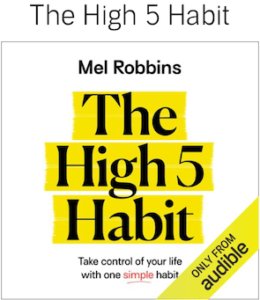 I love Mel Robbins, she’s so real and inspiring and down to earth and hilarious, and The High-5 Habit (61 of 52) is another great book. I bought the paperback, but have had no time to read, so I got the audiobook too. I love her narration – she’s a genius at kicking people’s butts and empowering them to change their own lives. I must admit, I don’t really do the things outlined, but I absolutely agree with it, and her way of combining science with real-life examples in such an inspiring way is genius.
I love Mel Robbins, she’s so real and inspiring and down to earth and hilarious, and The High-5 Habit (61 of 52) is another great book. I bought the paperback, but have had no time to read, so I got the audiobook too. I love her narration – she’s a genius at kicking people’s butts and empowering them to change their own lives. I must admit, I don’t really do the things outlined, but I absolutely agree with it, and her way of combining science with real-life examples in such an inspiring way is genius.
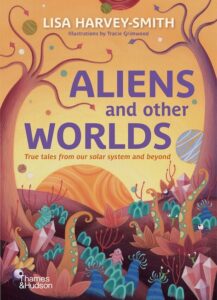
As a kid, Lisa Harvey-Smith fell in love with the night sky and imagined she was an astronaut sent to explore Mars. Now, as an astrophysicist, she studies the universe for a living. She’s worked on the birth and death of stars, studied magnetic fields in space, and even weighed ablack hole in a distant galaxy using radio emissions and physics calculations. She’s also a wonderful science communicator, and shares some of her passions in her gorgeous new book Aliens and Other Worlds (62 of 52). From water bears to grumpy red dwarf planets, and exoplanets to tortoise astronauts, she reveals true stories of the solar system and beyond, and ponders just what an alien might look like. Beautifully illustrated by amazing artist Tracie Grimwood, this is a book to treasure – it’s aimed at eight- to twelve-year-olds, but I adore it too, and loved every single word and every delightful illustration…Lisa is Australia’s first Women In STEM Ambassador, so it was awesome to interview her for Explorers magazine…
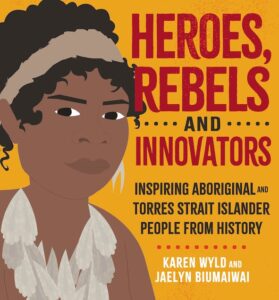 🧡 Heroes, Rebels and Innovators (63 of 52) by Karen Wyld is a beautiful book that tells true stories of adventure, bravery, empathy and rebellion, sharing the fascinating stories of eight incredible First Nations heroes who are a vital part of this country’s history. From young Darug woman Patyegarang, a liaison between Aboriginal people and the First Fleet, who discussed botany and astronomy with William Dawes, and taught him her language while learning his, to Yarri and Jacky Jacky, two of the Wiradjuri men who risked their own lives during the Gundagai flood of 1852 to save the settlers who’d long mistreated them, Ngarrindjeri inventor David Unaipon, known as the Black da Vinci, and Whadjuk resistance fighter and environmentalist Fanny Balbuk Yooreel, these stories are sad but inspiring, about courageous, fiercely intelligent people so long overlooked, but whose stories are finally being told. It’s beautifully illustrated by Jaelyn Biumaiwai, and I really hope there’s a second volume soon! And swipe for part of my interview with Karen in Australian Geographic: Explorers magazine…
🧡 Heroes, Rebels and Innovators (63 of 52) by Karen Wyld is a beautiful book that tells true stories of adventure, bravery, empathy and rebellion, sharing the fascinating stories of eight incredible First Nations heroes who are a vital part of this country’s history. From young Darug woman Patyegarang, a liaison between Aboriginal people and the First Fleet, who discussed botany and astronomy with William Dawes, and taught him her language while learning his, to Yarri and Jacky Jacky, two of the Wiradjuri men who risked their own lives during the Gundagai flood of 1852 to save the settlers who’d long mistreated them, Ngarrindjeri inventor David Unaipon, known as the Black da Vinci, and Whadjuk resistance fighter and environmentalist Fanny Balbuk Yooreel, these stories are sad but inspiring, about courageous, fiercely intelligent people so long overlooked, but whose stories are finally being told. It’s beautifully illustrated by Jaelyn Biumaiwai, and I really hope there’s a second volume soon! And swipe for part of my interview with Karen in Australian Geographic: Explorers magazine…
For a wonderful story about the book, and author Karen Wyld and illustrator Jaelyn Biumaiwai, click here…
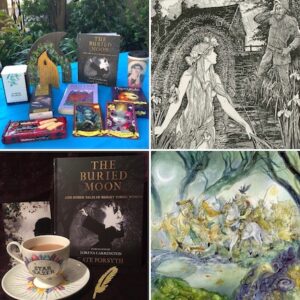
The November faery tales for the Australian Fairy Tale Society were Scottish story Tam Lin and European faery tale Nixie of the Millpond (64 of 52), and we had a fascinating afternoon sitting in the garden of the Don Bank Museum, drinking Scottish tea, eating Scottish shortbread and chatting about various versions of the stories (including Kate Forsyth and Lorena Carrington’s version of Tam Lin,and Lucy Cavendish’s Faerytale Oracle, which features both stories), and being so happy to be out on a Sydney summer afternoon – which turned out to be a slim window between lockdown and the forthcoming shadow lockdown. So grateful for the magic of stories to transport us no matter where we are…
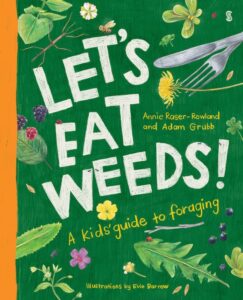
Eating weeds is second nature to Melbourne horticulturalist and writer Annie Raser-Rowland, but she sometimes gets funny looks when she tells people about it! She doesn’t mind though, and says most people nowadays are really interested, because of all the benefits. Not only is it free (and delicious) food, it also helps the environment, adds nutrition – and a taste of the wild – to our diets, and encourages us to get outside into nature. Annie and her fellow forager Adam Grubb have written a wonderful kids book, Let’s Eat Weeds! (Scribble Kids Books) 65 of 52, which outlines how to identify edible weeds, how to harvest them, and even how to eat them, with great recipes for everything from salads and dips to pikelets, pesto and a pie. There are also sections on how to make your own leaf library, how to press weed flowers, myths, a careful-ometer and a fun quiz. (There are also additional photos at www.letseatweeds.com, and Annie’s email address is in the book so readers can send in photos if they’re not sure of any weed they find.) A beautiful hardcover book, it’s gorgeously illustrated by Evie Barrow, and there are some fun activity pages here, plus my interview with Annie in Australian Geographic Explorers magazine.
Annie and Adam also wrote The Weed Forager’s Handbook for grown-ups, and take people on edible weed walks around Melbourne, www.eatthatweed.com xx
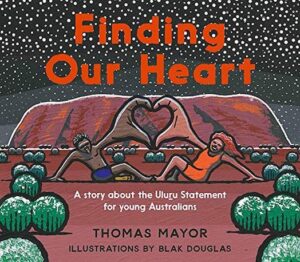
🖤💛❤️ Thomas Mayor’s Finding the Heart of the Nation: The Journey of the Uluru Statement towards Voice, Treaty and Truth is a powerful, deeply moving book about the Uluru Statement From the Heart. His younger reader edition, Finding Our Heart: A Story about the Uluru Statement for Young Australians(66 of 52), vividly illustrated by Blak Douglas, is also brilliant, and really important. It’s such a beautiful and simple explanation of the Uluru Statement, what it means, and how we can all make a difference. I hope all kids get a chance to read it!
When we all came together at Uluru, we invited all Australian people to accept our voice and culture as a gift.
Can you help us find the heart of the nation?
A book about understanding Australia’s past, so we can have a shared future.
💚🖤💙 I asked Thomas what inspired it when I interviewed him about his wonderful Freedom Day: Vincent Lingiari and the Story of the Wave Hill Walk-Off book: “The first inspiration came from my own children. My youngest are in primary school where they are learning about the traditional owners where we live, the Larrakia. Every time they something new, such as a word or about the Larrakia seasons, they come home excited to share their newfound knowledge. The second inspiration came from when I had the Uluru Statement out in public as part of the campaign. A little boy, perhaps nine-years-old, dragged his family to the statement where he told his family about it. He had learnt about it in school. These two inspirations gave me the understanding that children are proud of First Nations culture, they see it as their identity, and also that they teach us, the adults in their lives. The young reader edition is a tool for children, as much as it is a lesson, to teach adults why and how they can support the campaign for a First Nations Voice enshrined in the constitution.”
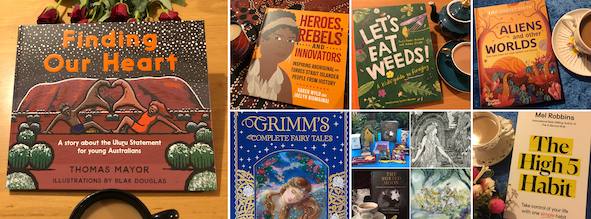
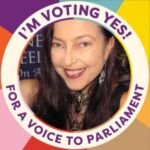

Get Social